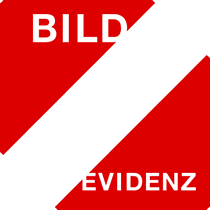 |
Bernhard SiegertGerd-Bucerius-Professor für Geschichte und Theorie der Kulturtechniken, Fakultät Medien, Bauhaus-Universität Weimar Co-Direktor des Internationalen Kollegs für Kulturtechnikforschung und Medienphilosophie Weimar |
In Residence
February 2018 – April 2018
Research Project
“A Media Theory of the Trompe-l’oeil in Late Medieval Netherlandish Book Painting and Early Dutch Still Lifes”
The rather ambitious plan, which I hope to carry out during my stay at the Kolleg-Forschergruppe BildEvidenz, is to bring to a close a research project which I have started in 2014 with Dr. Helga Lutz (now professor for Historische Bildwissenschaft/Art History at the University of Bielefeld).
The research project attempts to read a special form of “excessive mimesis” (the term is borrowed from Louis Marin) – i.e. the trompe-l’oeil in Dutch still lifes – as a not totally assimilated leftover of the process of differentiation between the various parts of the illuminated book page of the 15th century, which goes through a spectacular phase of re-organization during the late 15th/early 16th century especially in what is known as the “Ghent-Bruges school”. We read the trompe-l’oeil as a figure which by its mimetic excess pushes a thematization of the two-dimensional materiality of the illuminated book page, which concerns mainly the difference between the imaginary space of the miniature and the real space of the spectator/reader. The main focus is on the transformation of image grounds in Franco-Flemish books of hours, which turn into ambivalent partly intra-, partly extra-diegetic image objects. This doubling of signs into first-order-signs and second-order-signs, which one could call “trompe-l’oeilization” is countered by a bias of the medium to “rationalize” those ambivalent image grounds. This bias can be seen at work in strategies to homogenize the spaces of the miniature and of the border, and to resolve the conflicts between the imagined verticality and horizontality of the imaginary and real surfaces, which one can observe still in certain 17th century still lifes. The close connection of the early still life to an architecture of niches can be seen from this perspective as a strategy to come to terms with a media-induced excessive mimesis.
Since we understand still life objects as connected to image grounds and mediatic spaces, these objects can be interpreted as results of processes of taming and re-framing of mimetic proliferations.
This major line of argumentation has led to other research topics which I now need to integrate into the overall context. This concerns especially the “figurality” (Lyotard) and textility of the line, especially in Albrecht Dürer’s designs for the prayer book of Maximilian I, or the mediality of the trompe-l’oeil in the water colors, book illuminations, and city views of Joris Hoefnagel.
Research Interests
-
- The Sea and Seafaring as Themes of a History of Representation and its Limits
- A Media Theory of the Trompe-l’oeil in Late Medieval Netherlandish Book Painting and Early Dutch Still Lifes
- Media of the Sacred
- Native Transformation Masks of the Northwest Coast
Publications
Cultural Techniques: Grids, Filters, Doors, and Other Articulations of the Real, translated by Geoffrey Winthrop-Young (New York: Fordham University Press, 2015).
Mimesis, ed. by Friedrich Balke, Bernhard Siegert and Joseph Vogl, (=Archiv für Mediengeschichte 12/2012) (Munich: Wilhelm Fink Verlag).
Medien des Heiligen, ed. by Friedrich Balke, Bernhard Siegert and Joseph Vogl, (=Archiv für Mediengeschichte 12/2012) (Munich: Wilhelm Fink Verlag).
In der Mixed Zone. Klapp- und faltbare Bildobjekte als Operatoren hybrider Realitäten, in David Ganz, Marius Rimmele, eds., Klappeffekte. Faltbare Bildträger in der Vormoderne (Berlin: Reimer Verlag, 2016), 109-138 (with Helga Lutz)
Metamorphosen der Linie. Das Figurale in der spätmittelalterlichen Kalligraphie und Buchmalerei, in Maske und Kothurn 62 (2016), no 2-3: Texture Matters: Der Tastsinn in den Medien, 25-45.
The Chorein of the Pirate. On the Origin of the Dutch Seascape, in Grey Room 57 (2014), no 4, 6-23.
Die Leiche in der Wachsfigur. Exzesse der Mimesis in Kunst, Wissenschaft und Medien, in Peter Geimer, ed., Untot. Existenzen zwischen Leben und Leblosigkeit (Berlin: Kulturverlag Kadmos, 2014), 116-135, 228-231.
Metamorphosen der Fläche. Eine Medientheorie des Trompe-l’Œils von der flämischen Buchmalerei bis zum niederländischen Stillleben des 17. Jahrhunderts, in Friedrich Balke, Maria Muhle, Antonia von Schöning, eds., Die Wiederkehr der Dinge (Berlin: Kulturverlag Kadmos, 2011), 253-284 (with Helga Lutz).
ContactBernhard SiegertCenter for Advanced Studies BildEvidenz Arnimallee 10 |


